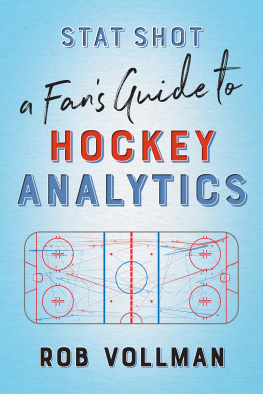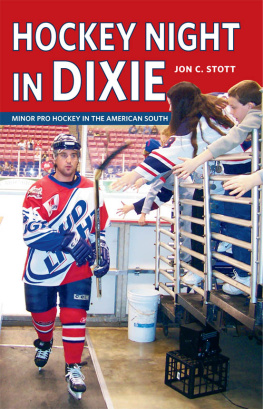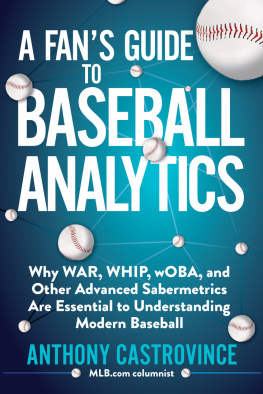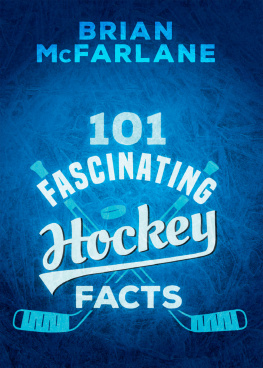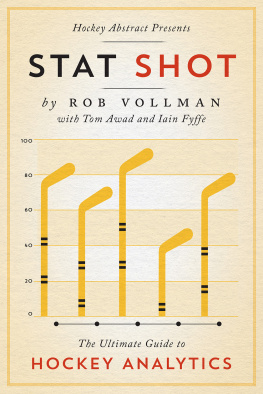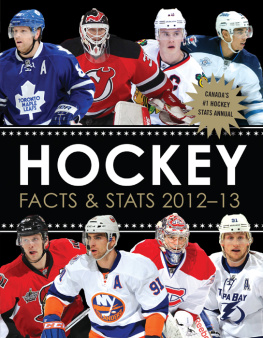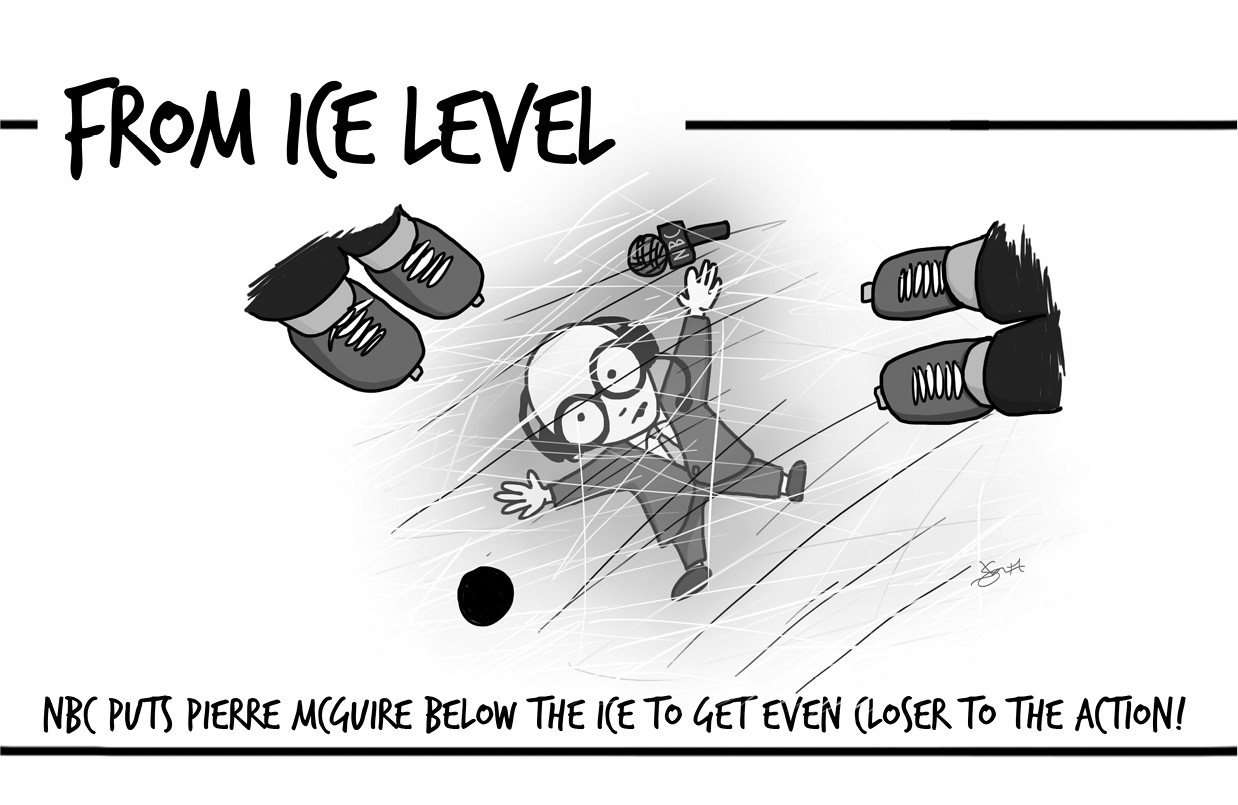by Craig Custance
NHL insider, editor-in-chief of The Athletic Detroit, and author of Behind the Bench: Inside the Minds of Hockeys Greatest Coaches
Detroit, Michigan
It was a room full of people at one of the largest analytics conferences in the world. On stage, there was a nice mix of traditional hockey voices and those knee-deep in analytics. Everything was in place for an informative session on hockey analytics and how they should best be used, and for a good 10, maybe 15 minutes thats exactly what the audience received.
But slowly, as the session continued, the conversation strayed from analytics and into a general hockey question-and-answer session. When a panellist started talking about the benefits of the larger European ice versus North American ice, my hope of getting a substantial lesson in analytics was gone. Years ago, this was how it often went.
Theres a reason for that. Talking about analytics in a way a large audience can easily consume while still being in-depth enough to satisfy those with more than a passing knowledge of the subject is really hard.
Start explaining the calculations for Euclidean distance and how it factors into your analysis, and youre probably going to lose any fan who just wants an understanding of hockey analytics beyond Corsi. The same thing happens when you present a chart that looks like somebody puked NHL team logos onto a spiderweb.
But in the last couple years, weve also seen an overreliance on basic shot-based statistics sold as advanced metrics. Ive been guilty of it myself. Hockey fans now want context and a deeper-level analysis, beyond suggesting a defenceman is great because he has a 52.3% Corsi for.
Rob Vollman always hits the sweet spot.
I got to know Vollman when we were working together at ESPN, when hockey analytics were just emerging from the obscure writings of some of the original ground-breakers into everyday conversations. What was new to many of us traditional hockey writers on ESPNs staff was stuff Vollman had been working on for years, and so he became the guy we went to with questions.
During an era in which there was often a rift between the traditional media and those developing hockey analytics, Vollman was exactly the opposite. He was patient in answering questions and emails that came from our hockey-writing group as we tried to grasp the different concepts.
Soon, in part because of his insight, we were working hockey analytics into stories, helping round out our coverage. While some corners of the media were hostile and resisted the analytics movement, we worked hard to figure out where it fit into traditional hockey coverage. Having Rob in those discussions, quick to answer any and all questions in a way we all understood, made the process anything but hostile. It was educational. It was fun. It made us better writers.
Its all the things that make reading his books worthwhile.
Theres a reason people keep buying the Hockey Abstract series, like we all used to buy season preview magazines from the newsstand. And in this sequel to Stat Shot, readers are treated to the same mix of clear analysis, a little humour, and complex ideas presented in such a way that the pages keep turning.
Its been fascinating to watch the adoption of hockey analytics come in fits and starts. It hasnt been a linear process, but when you pan out, you see that the progress has been constant. For years now, Vollman has been a part of that constant march toward mainstream acceptance of hockey analytics. His consistent, clear guidance has made us all better viewers of the game.
If this is your first time reading Vollman on analytics, Im excited for what you have ahead. Youre going to laugh, youre going to question how you watch hockey, and, most importantly, youre going to become better equipped to soundly analyze hockey. If this isnt your first time reading Vollman, you know what youre in for. Enjoy!
Go ahead, give him another one, my older brother Mike smilingly prodded his friend.
Anyone?
Yes, anyone. Any page, any player, my brother insisted.
Okay. My brothers friend flipped through my well-worn copy of the 1988Baseball Register and studied the pages, brows furrowed. I watched on nervously, but my brother had a relaxed and confident grin on his face. Okay, got one, his friend said at last. Dickie Noles.
I breathed a sigh of relief because I knew this player well. Dickie Noles, played with the Chicago Cubs and Detroit Tigers last year, I reported from memory. He was 4-2 with an ERA around 3.53.
Mike smiled at his friend, who nodded to confirm my information was correct.
That was actually his best ERA ever. I think it started in the 3.80s in his first two seasons with the Phillies, but really shot up after that, I continued. His best season was around 1982, with the Cubs, when he was 10-13. Other than that, I dont think he ever won more than five games in a season.
By this stage, my brother was chortling at the shocked look on his friends face. So, he memorized everybodys stats? his friend asked. Is there something wrong with him?
As a child, I often wondered if there was something wrong with me, and my love of numbers. Sure, it was a source of amusement for my brother and very convenient for my parents to have a walking calculator when a nation-wide 7% sales tax was introduced in 1991, but none of my friends seemed to share my passion for numbers.
Thats why the discovery of the Bill James Baseball Abstract 1984 was such an important event in my life. Not only had I found someone who apparently looked at the world the same way I did, but he showed me the tremendous benefits of doing so.
It didnt take me long to start applying these ideas to my favourite sport, hockey. I even discovered and fully digested a few of the early books on hockey analytics, like Stan and Shirley Fischlers Breakaway 86, and the Klein and Reif HockeyCompendium. I never dreamed that one day Id be publishing an analytics book of my very own, but that day eventually came.
After several seasons of co-authoring annual guide books in the Hockey Prospectus series, I finally published my own book in 2013, Hockey Abstract. It was obviously named after the Bill James books from my childhood, and I even designed the structure and layout to match (please dont sue). It was organized into 10 chapters that asked questions in true James-like fashion, followed by 10 chapters that provided some background on key statistics and related principles10 being such a nice, round number.
The book was a success, not just in terms of sales but in terms of getting people hooked on the world of hockey analytics, much like Bill James had inspired me so many years before.
My fellow fans werent the only ones paying attention, and I soon found myself in an NHL GMs office. He was absolutely fascinated by what I had explored in those pages, and we swapped stories and opinions for hours. I hadnt planned on writing another book, but by the time I left his office, he had convinced me of the importance of this work.

